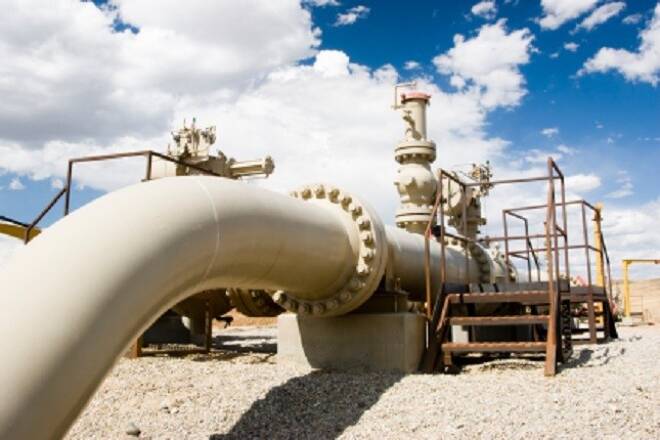Advertisement
Advertisement
Natural Gas Price Prediction – Prices Rebound at Trend Line Support
By:
Natural gas prices rebounded more than 7% on Tuesday erasing Monday’s losses. Cooler weather is finally making its way from west to east according to the
Natural gas prices rebounded more than 7% on Tuesday erasing Monday’s losses. Cooler weather is finally making its way from west to east according to the latest forecast from the National Oceanic Atmospheric Administration. Prices have sold off 29% in the past 4-weeks, as warmer than normal weather made its way through the US. Inventories still remain below the 5-year average range but the deficit is beginning to decline.
Technical Analysis
Natural gas prices rebound from trend line support which connects the lows in September to the lows in October and comes in near 3.5. Resistance is seen near former support at 3.66 and then again at the 10-day moving average at 4.17. Short-term momentum has turned positive as the fast stochastic generated a crossover buy signal. The fast stochastic is also printing a reading of 16, below the oversold trigger level of 20 which could foreshadow a correction.
LNG Exports Where Flat
U.S. LNG exports were flat week over week. Reports from the EIA reveal that eight LNG vessels from the Sabine Pass liquefaction terminal, one from Cove Point, and one from Corpus Christi with a combined LNG-carrying capacity of 26.2 Bcf departed the United States between December 6 and December 13, and one vessel was loading at Sabine Pass on Wednesday, according to Bloomberg shipping data.
Inventory Deficit Narrows
Working gas stocks’ deficit to the five-year average decreased, and the deficit to the bottom of the five-year range increased. In the Lower 48 states, total working gas stocks are 427 Bcf lower than the five-year minimum, and every storage region is currently lower than the bottom of its five-year range. The deficit to the bottom of the range increased in all regions except the Pacific and South Central salt regions. As of this report week, the Midwest region is 58 Bcf (6%) lower than the five-year minimum, and the South Central region, including both salt and nonsalt facilities, is 182 Bcf lower than the five-year minimum.
About the Author
David Beckerauthor
David Becker focuses his attention on various consulting and portfolio management activities at Fortuity LLC, where he currently provides oversight for a multimillion-dollar portfolio consisting of commodities, debt, equities, real estate, and more.
Did you find this article useful?
Latest news and analysis
Advertisement
